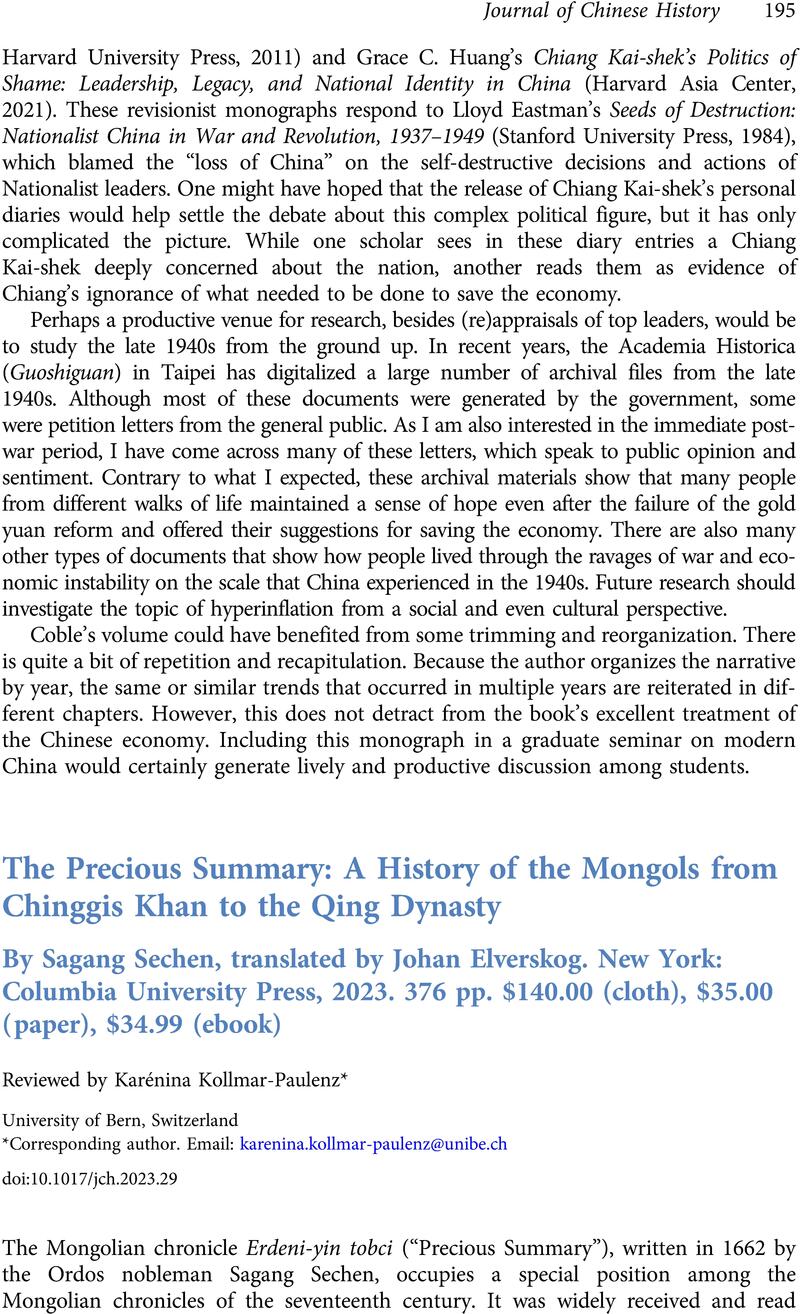No CrossRef data available.
Published online by Cambridge University Press: 12 October 2023

1 The Bejewelled Summary of the Origin of Khans (Qad-un ündüsün-ü Erdeni-yin tobci): A History of the Eastern Mongols to 1662 [by] Sagang Sechen, Prince of the Ordos Mongols. Newly translated from the original Mongolian by John R. Krueger (Bloomington: The Mongolia Society, 1967).
2 Sagang Secen: Erdeni-yin tobci (“Precious Summary”): A Mongolian Chronicle of 1662. 1: The Urga text transcribed and edited by M. Gō, I. de Rachewiltz, J.R. Krueger, and B. Ulaan (Canberra: Faculty of Asian Studies, Australian National University, 1990).
3 Based on the Tibetan usage of the term (Tib. mjug byang and mdzad byang), a colophon can be defined as “a piece of writing found as a rule at the end of a work … providing information on one or more facts related to its identity, production, and transmission, including the work's title, names of persons involved, such as author or compiler … and the duration, date, place, (re)sources, and motives of composition or production.” (Wangchuk, Dorji, “The Syntax of Tibetan Colophons: An Overview,” in The Syntax of Colophons: A Comparative Study across Pothi Manuscripts, edited by Balbir, Nalini and Ciotti, Giovanni (Berlin: De Gruyter, 2022), 328Google Scholar.
4 Kara, G., “Sagang Sechen's Teachings Reconsidered,” Acta Orientalia Academiae Scientiarum Hungaricae 74.2 (2021), 268CrossRefGoogle Scholar.
5 Krueger, John R., “The Epilogue and Gnomic Colophon of the Erdeni-yin Tobči,” Central Asiatic Journal 8 (1963), 104–34Google Scholar, and Kara, “Sagang Sechen's Teachings Reconsidered.”
6 See Schaik, Sam van, Tibet: A History (New Haven: Yale University Press, 2011), 41–42Google Scholar.